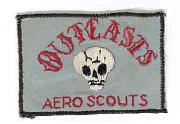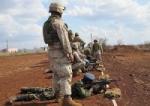I stumbled upon this piece by COL Gentile in the Summer 2009 issue of Army History Magazine (9.65 MB PDF file): The Selective Use of History in the Development of American Counterinsurgency Doctrine (begins on page 21 of 60). In it, Gentile points out that current COIN theory was developed largely in response to one narrow type of conflict, ignoring others, and now is being misapplied wholesale to other inappropriate situations.
In a nutshell: Galula assumes future wars will be countering Maoist revolutionary wars, Galula proposes a sophisticated counter to it, US doctrine writers fall for it, hilarity ensues.
Here is a series of excerpts that summarize the basic idea...
So, my questions are...The French officers of the Revolutionary War School constructed a simplified model to explain these insurgencies based on Mao Tse-tung’s overthrow of the Nationalist Chinese government in 1949... The French officers reduced Maoist revolutionary war into a simplified and rigid template for action that, they believed, other Communist-inspired insurgencies would follow... These officers spent their time constructing a doctrine and methods to counter the simplified type of insurgency they posited instead of gaining a deeper appreciation and more sophisticated explanation of what Maoist revolutionary wars really entailed. The French officers essentially reduced Maoist revolutionary war to a set of uncomplicated steps that would occur during the process of internal revolution or insurgency... The counterrevolutionary approach that these French Army officers produced, in contrast to their simplification of Maoist war, was actually quite sophisticated. They sought to counter Maoist tactics by turning the process leading to Communist revolution on its head... Since the ultimate goal for Maoist revolutionary war was to use the Communists’ domination of the people to overthrow the government, the officers’ goal in fighting it was to de-couple the people from the revolutionary insurgency.
- Excerpted from pages 25 and 26
1. For you historians, or those of you who play historians online, do you agree with the basic argument put forth that current COIN doctrine, based heavily upon Galula et al, is too narrowly built upon assumptions of insurgencies resembling Maoist revolutionary wars? Why?
2. If we assume that our COIN doctrine does, indeed, rest upon assumptions characteristic of a Maoist revolutionary war, does this render it inapplicable - or significantly flawed - for today's operations in Afghanistan? Why or why not?
3. What historical examples, if any, provide us with conflicts that share more parallels with Afghanistan and/or better lessons more applicable to Afghanistan? Why?












Bookmarks